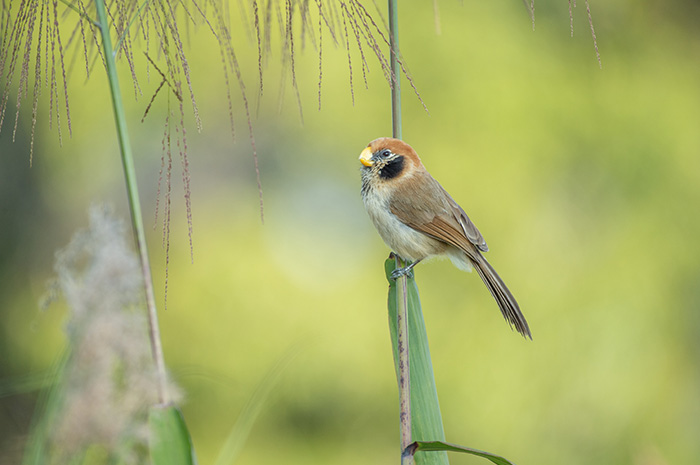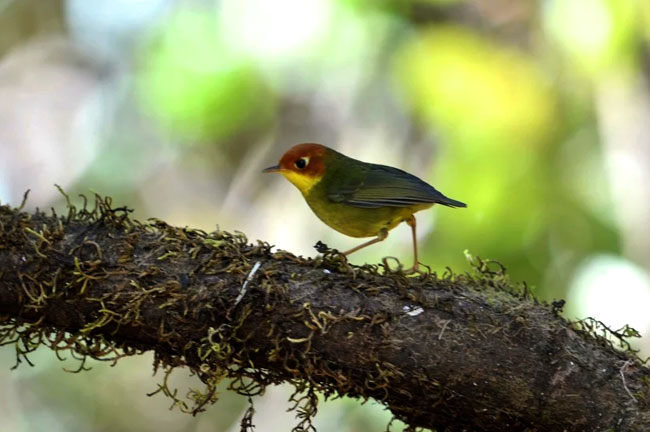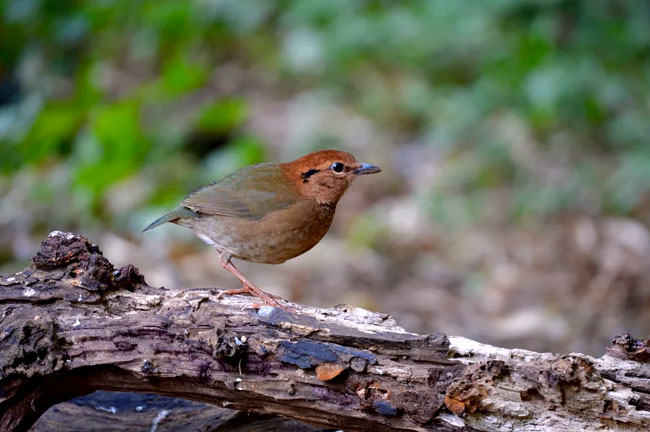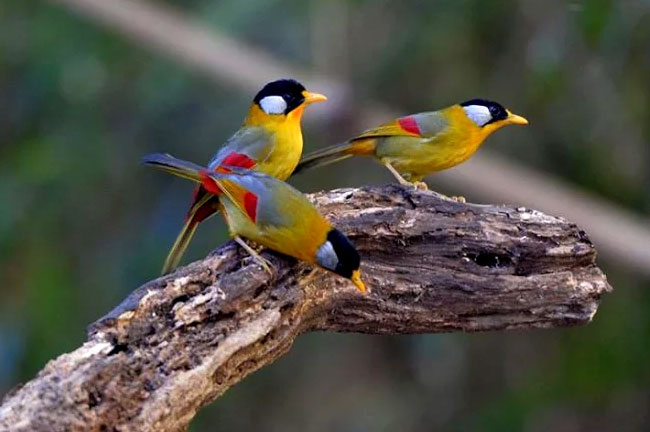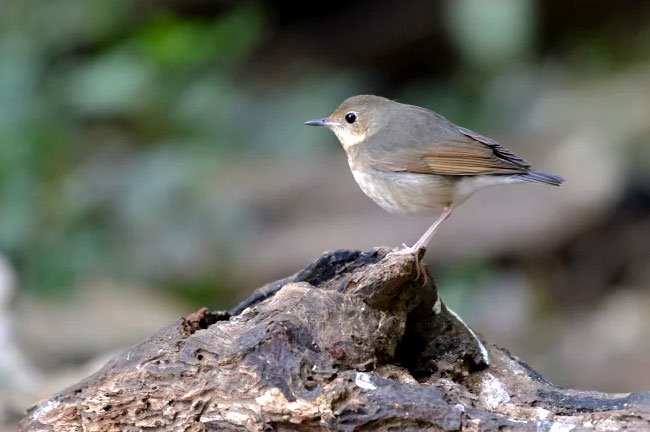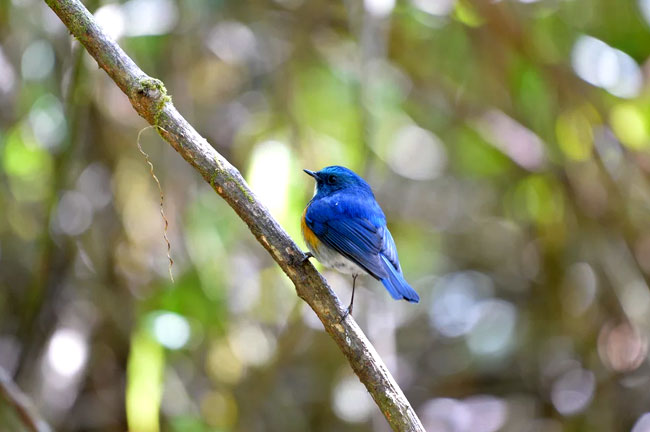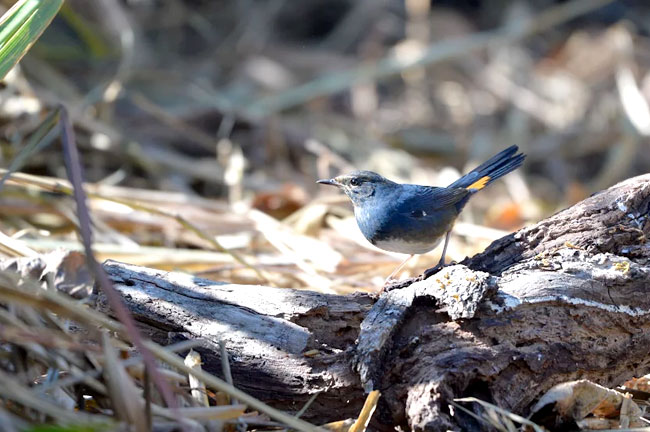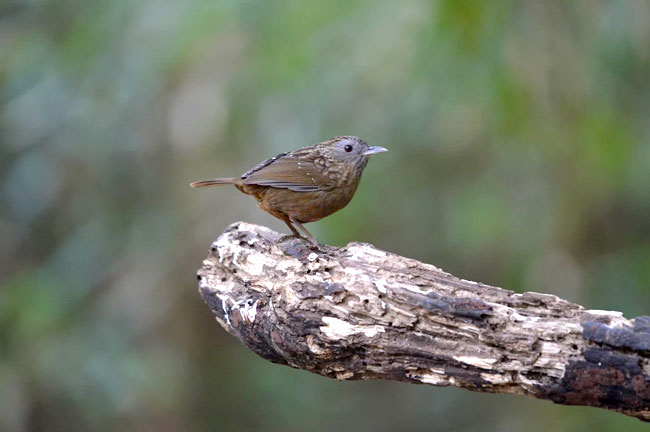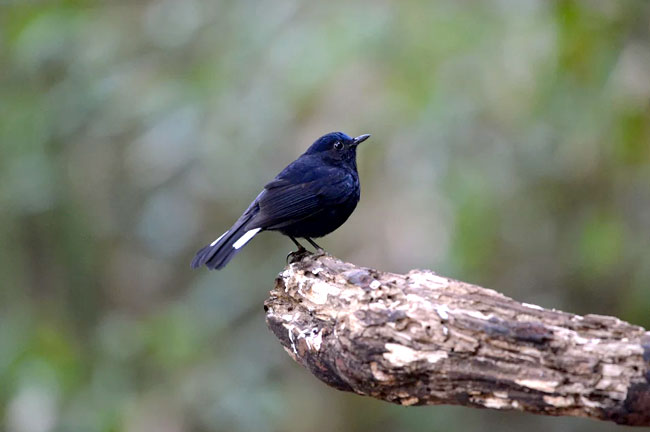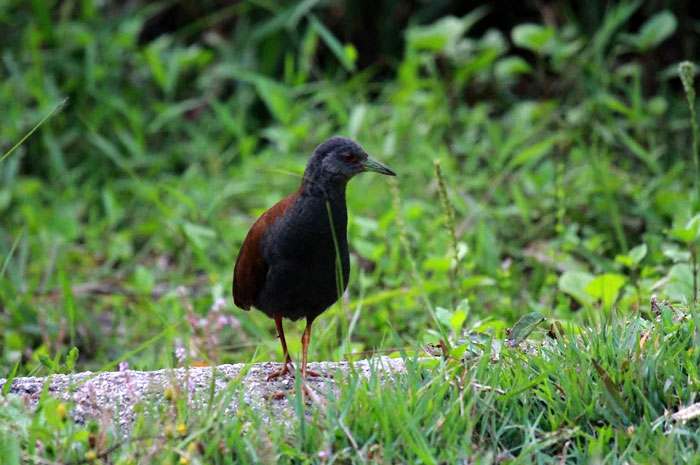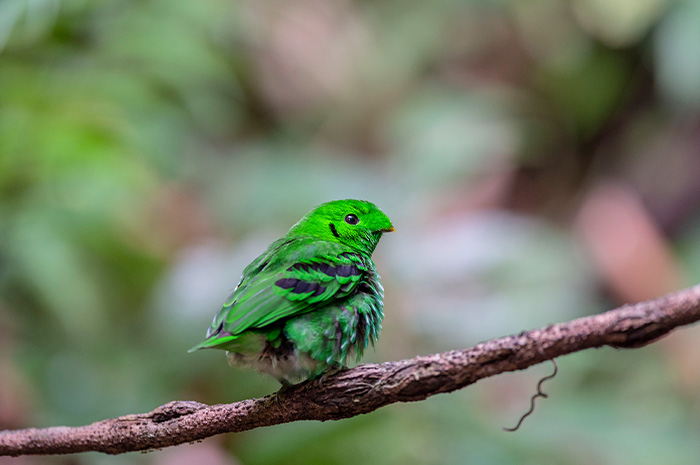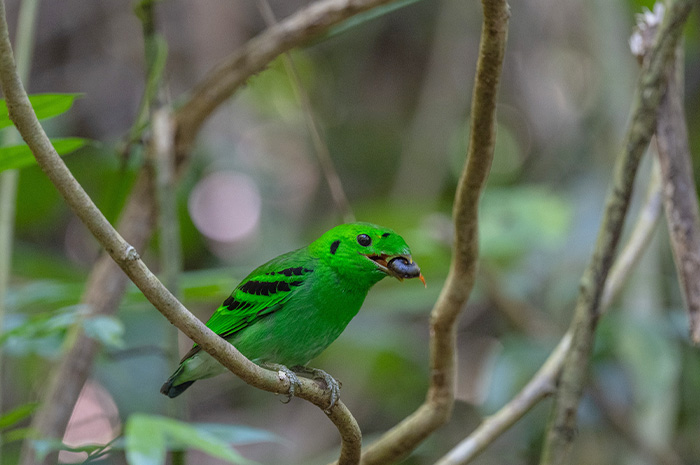Doi San Ju is on the west side of the mountain ridge and Doi lang is on the east side, but the road that connects these 2 places was blocked by the Thai army for a safety reason. So, getting to birding spots on these places we have to take the road from different side of the ridge in different district. Then, we will explore Doi San Ju for one day and strike out for Doi Lang on another day. Tham Pha Plong Temple, a peaceful and beautiful Buddhist temple situated at the outer perimeter of Doi Chiang Dao, a huge limestone mountain complex and declared as UNESCO Biosphere Reserve. Rice fields in Fang district will be a place for relax and easy birding before sunset on the day that we are exhausted from long travel or a big day birding on the mountain. Many common species yet appealing to see can be found in this habitat.
Please look at the itinerary for expected species that we stand a high chance to see at each destination.
Itinerary
Day 1: Tham Pha Plong Temple and rice paddies in Fang district
Pick up from the hotel in Chiang Mai town at early morning around 5.30 am. Leave for Tham Pha Plong Temple, located at the foothill of a huge limestone mountain of Doi Chiang Dao. The walk up to the temple we can connect with Orange-breasted Trogon, Pin-tailed Green-pigeon, Thick-billed Green-pigeon, Annam Limestone Babbler, Black-hooded Oriole, Greater Racket-tailed Drongo, Hair-crested Drongo, Asian Fairy Bluebird, Coppersmith Barbet, Red-whiskered Bulbul, Black-crested Bulbul, Sooty-headed Bulbul, Black Bulbul, White-headed Bulbul, White-crested Laughingthrush, Greater Necklaced Laughingthrush, Lesser Necklaced Laughingthrush, Green-billed Malkoha, White-rumped Shama, Verditer Flycatcher, Grey-headed Canary Flycatcher, Blue Rock Thrush, Puff-throated Babbler, Pin-striped Tit Babbler and many more. After lunch heading to the hotel in Fang district, check in and relax. At 4.00 pm. start birding again at the rice paddies nearby the hotel. Birds we might see in this habitat such as Amur Stonechat, Pied Bushchat, Little Green Bee-eater, Brown Shrike, Long-tailed Shrike, Scaly-breasted Munia, White-throated Kingfisher, Common Kingfisher, Paddyfield Pipit, Ashy Wood-swallow, Asian Pied Starling, Black-collared Starling, Great Myna, Common Myna, Oriental Magpie Robin, Chinese Pond Heron and Cattle Egret.
Meals: B / L / D
Overnight: Tangerine Ville Hotel
Day 2: Tham Pha Plong Temple and rice paddies in Fang district
Leave the hotel around 6.00 am, then traveling up the mountain to Doi Ang Khang. We will spend this morning visit several birding spots on this mountain that can be productive for Giant Nuthatch, Chestnut-vented Nuthatch, Crested Finchbill, Flavescent Bulbul, Brown-breasted Bulbul, Striated Bulbul, White-headed Bulbul, Dark-backed Sibia, Rufous-backed Sibia, Grey-capped Woodpecker, Stripe-breasted Woodpecker, White-browed Shrike-babbler, Burmese Shrike, Long-tailed Shrike, White-browed Scimitar-babbler, Silver-eared Mesia, Maroon Oriole, Black-hooded Oriole, Ashy Drongo, Scarlet Minivet, Long-tailed Minivet, Short-billed Minivet, Cook Swift, Japanese Tit, Black-winged Cuckoo-shrike and many more. In the afternoon we will visit a botanical garden in the Royal Project where we can connect with Spot-winged Grosbeak, Gould’s Sunbird, Black-throated Sunbird, Green-tailed Sunbird, Streaked Spiderhunter, Annam Limestone Babbler, Yunnan Fulvetta, Blue-winged Minla, Black-breasted Thrush, Chestnut-thrush, Grey-winged Blackbird, White’s Thrush, Dark-sided Thrush, and several species of White-eye. Head back to the hotel around 5.00 pm.
Meals: B / L / D
Overnight: Tangerine Ville Hotel
Day 3: Doi San Ju
Leave the hotel very early at 4.30 am. for the feeding spot on Doi San Ju, then set up a portable bird hide and wait for many species show up at sunrise. Because of limited space at the spot, so there is a very high competition on this spot among other groups of birders and photographers. This spot is the easiest place in Thailand to see Mrs Hume’s Pheasant (one of the world rarest Pheasant) at point-blank range. Other species often occurring at this spot are Mountain Bamboo Partridge, White-browed Laughingthrush, Rusty-cheeked Scimitar-babbler, Giant Nuthatch, Chestnut-vented Nuthatch, Ultramarine Flycatcher, Rufous-gorgetted Flycatcher, Olive-backed Pipit, Grey Bushchat, and Long-tailed Shrike. We might spend around 2-3 hours at this feeding spot, then we will move on slowly along the road and also stop at few more feeding spots that no need of setting up a portable bird hide again. Birds that we might see during the rest of the day such as Himalayan Cutia, Spot-breasted Parrotbill, Scarlet-faced Liocichla, Rufous-bellied Niltava, Large Niltava, White-bellied Redstart, Siberian Rubythroat, Black-throated Bush Tit, Chestnut-bellied Rock-thrush, Blue Whistling-thrush, White-browed Shrike Babbler, Yunnan Fulvetta, Golden Babbler, Golden-throated Barbet, Hume’s Treecreeper, Grey Treepie, Slaty-blue Flycatcher, Hill Prinia, Lesser Yellownape, Long-tailed Broadbill and many more.
Meals: B / L / D
Overnight: Tangerine Ville Hotel
Day 4: Doi Lang
Leave the hotel at 5.00 am. Because of the road going up the mountain to the birding spot is a very rough dirt road, so we have to change from our van to a truck. Doi Lang is mostly covered by a dense and tall montane forest. Birds that inhabit this area many species are similar to Doi San Ju, but some species are much easier to see over here. There is also a particular species that only can see here, which is a Fire-tailed Sunbird, but not easy to find one. The highlight species such as Scarlet-faced Liocichla, Chestnut-headed Tesia, Brown-crowned Scimitar-babbler, Whiskered Yuhina, Striated Yuhina, Crested Finchbill, Spot-breasted Laughingthrush, Red-tailed Laughingthrush, Himalayan Bluetail, Golden Bush Robin, Orange-flanked Bush-Robin, White-gorgetted Flycatcher, Dark-backed Sibia, Rufous-backed Sibia, Rufous-bellied Niltava, Spectacled Barwing, Spot-winged Grosbeak, Black-throated Parrotbill, Rufous-winged Fulvetta, Black-throated Bush Tit, Black-breasted Thrush, Grey-sided Thrush, Eyebrowed Thrush and so on.
Meals: B / L / D
Overnight: Tangerine Ville Hotel
Day 5: Fang to Doi Inthanon National Park
After breakfast at the hotel, travel to Doi Inthanon National Park, we can stop for birding at few spots on the way. Late afternoon after check in at the resort inside the park we will travel to lower elevation area where a dry-dipterocarp forest occur and searching for Collared Falconet. Other species that we might see here such as Black-headed Woodpecker, Lineated Barbet, White-faced Jay, Red-billed Blue Magpie, Sooty-headed Bulbul, and White-rumped Falcon.
Meals: B / L / D
Overnight: Daeng Bird Center Resort
Day 6: Doi Inthanon National Park
After breakfast around 6.30 am., travel straight up to the top peak of the park, which is also the highest peak of Thailand at 2,565 meters above sea level. This peak has the unique habitat of the higher elevation peat bog surrounded by very pristine cloud forest called “Ang Ka Peat Bog”, it is the only one in the country. We will take slow paces on a well-maintain boardwalk goes around this miraculous peat bog in a loop. Spending few hours in this boardwalk and also around the top peak can be very productive for Doi Inthanon Sunbird (a locally endemic sub-species), Gould’s Sunbird, Ashy-throated Warbler (a locally endemic species), White-browed Shortwing, Snowy-browed Flycatcher, Slaty-bellied Tesia, Pygmy Cupwing, Rufous-throated Partridge, Dark-sided Thrush, Yellow-bellied Fairy Fantail, Yellow-bellied Flowerpecker, Davison’s Leaf Warbler, Rufous-winged Fulvetta, Silver-eared Laughingthrush, Dark-backed Sibia, Chestnut-tailed Minla, Blue-winged Minla, Eye-browed Thrush, Grey-sided Thrush, Speckled Wood Pigeon, Ashy Wood Pigeon and so on. Then, we will travel down to the mid-elevation area where we might connect with Slaty-bellied Tesia, Lesser Shortwing, White-gorgetted Flycatcher, Hume’s Treecreeper, White-throated Fantail, Yellow-bellied Fairy-fantail, Black-eared Shrike-babbler, Clicking Shrike-babbler, Mountain Bulbul, and Lesser Racket-tailed Drongo.
After lunch, we will go to a stream near electric power generation station and also visit a nearby waterfall behind the Royal Project. Birds that we might bump into at this area include White-capped Water-redstart, Plumbeous Redstart, Pygmy Cupwing, Streaked Wren-babbler, White-crowned Forktail, Slaty-backed Forktail and so on. Head back to the resort around 6.00 pm.
Meals: B / L / D
Overnight: Mr. Daeng Bird Center Resort
Day 7: Doi Inthanon National Park to the airport
We will spend our last morning to explore more new species around the park’s second checkpoint, here we can stroll along the road and also light trek in the short forest trail called “Jeep track”. This morning might productive for Long-tailed Minivet, Short-billed Minivet, Grey-chinned Minivet, Little Pied Flycatcher, Mountain Tailorbird, Yellow-cheecked Tit, Rufous-backed Sibia, Chestnut-crowned Warbler, Chestnut-vented Nuthatch, Slaty-bellied Tesia and more. After lunch leave Doi Inthanon for Chiang Mai airport.
Note: The itinerary is indicative only, it is subject to change according to the situation. The main destinations might swap around and more extra birding spots can be added. The accommodation mentioned above can be changed in case of no room available by the time you are booking the tour. We are totally flexible to adjust any option in the program to deliver you a bespoke itinerary. Discuss with us to customize the itinerary that best suit you.

